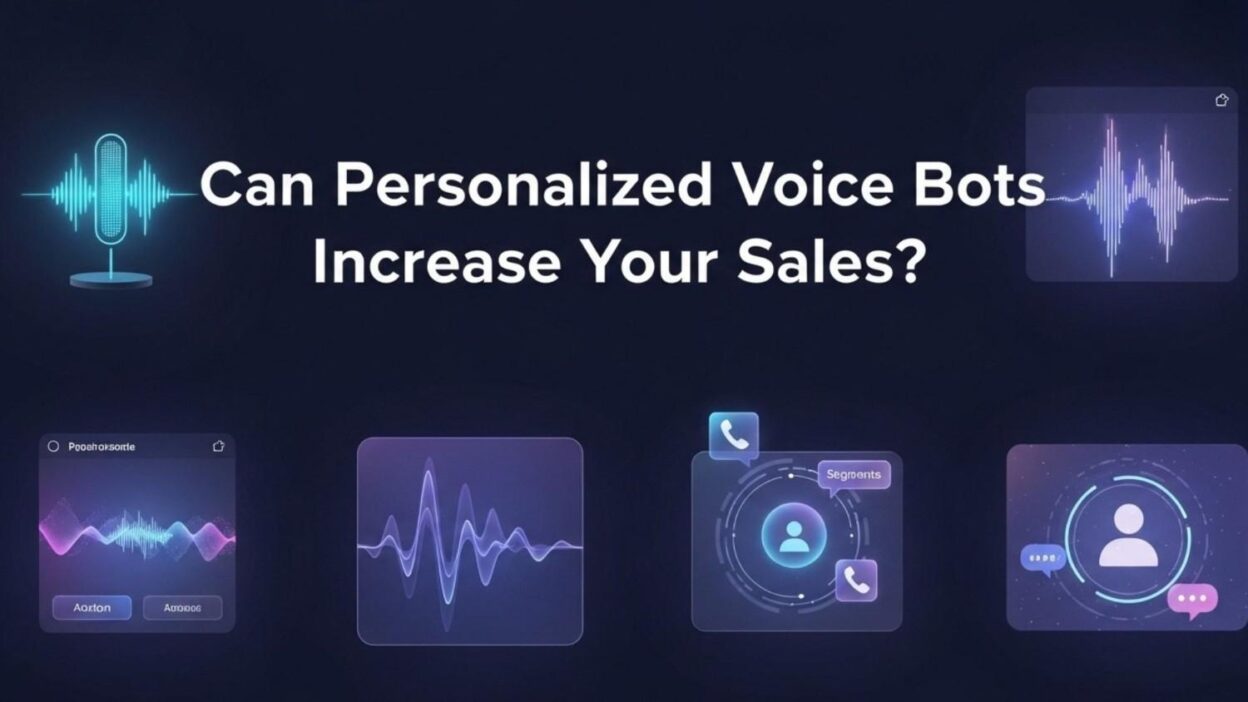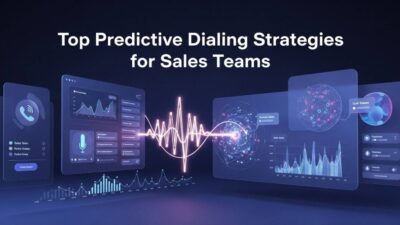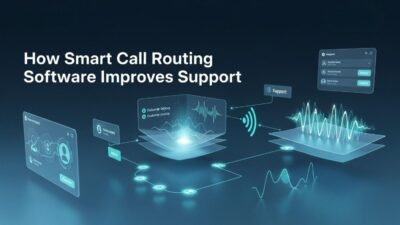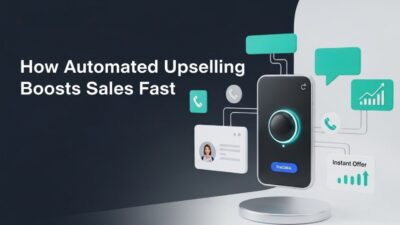Introduction
Table of Contents
Sales teams face relentless pressure to generate more revenue with fewer resources. Cold calling campaigns yield diminishing returns as consumers screen unknown numbers. Manual outreach processes scale poorly without proportional headcount increases. Traditional sales approaches struggle against modern buyer behaviors.
The numbers paint a challenging picture. Average cold call success rates hover around 2-3%. Sales representatives spend only 35% of their time actually selling. Follow-up calls rarely happen at optimal moments due to manual scheduling. Qualified leads slip through cracks during peak demand periods.
Personalized voice bots for sales offer a compelling solution to these persistent challenges. Intelligent systems engage prospects through natural conversations at massive scale. Machine learning enables customization based on individual customer data. Voice technology reaches customers preferring phone communication over digital channels.
Early adopters report remarkable results from voice bot implementations. Conversion rates climb 30-50% compared to traditional approaches. Cost per lead drops dramatically through automation efficiency. Customer satisfaction improves despite conversations happening with machines.
This comprehensive guide explores how voice bots drive sales performance. You’ll discover specific applications delivering measurable revenue growth. Real-world case studies demonstrate successful implementations across industries. Practical frameworks help you evaluate voice bot opportunities for your business.
Understanding Voice Bot Technology
How Modern Voice Bots Work
Voice bots combine multiple advanced technologies into cohesive systems. Speech recognition converts spoken words into text for processing. Natural language understanding interprets meaning and intent behind customer statements. Dialogue management determines appropriate responses based on conversation context.
Text-to-speech engines generate natural-sounding voice output. Modern systems sound remarkably human with proper intonation and pacing. Voice quality has improved dramatically in recent years. Many customers cannot distinguish bots from human agents initially.
Machine learning powers continuous improvement in bot capabilities. Systems learn from thousands of conversations over time. Pattern recognition identifies successful dialogue approaches. Unsuccessful interactions inform refinements to response strategies.
Cloud infrastructure enables scalability across simultaneous conversations. Bots handle hundreds or thousands of calls concurrently. No capacity constraints limit outreach volume. Geographic distribution happens without location-specific infrastructure.
What Makes Voice Bots “Personalized”
Generic scripts alienate modern consumers expecting tailored experiences. Personalized voice bots for sales adapt conversations to individual prospects dynamically. Customer data integration provides context about purchase history and preferences. Behavioral triggers determine optimal talking points for each person.
Dynamic scripting adjusts questions based on previous responses. The bot remembers information shared earlier in conversations. Recommendations align with stated needs and interests. Tone and pacing adapt to customer communication styles.
CRM integration connects voice bots to comprehensive customer profiles. Purchase history informs product recommendations. Previous interactions influence conversation approaches. Account status determines appropriate offers and messaging.
Predictive analytics guide personalization decisions. Models forecast which products interest specific customers. Propensity scores identify prospects most likely to convert. Next-best-action recommendations optimize conversation paths.
The Evolution From IVR to Intelligent Bots
Interactive voice response systems frustrated customers for decades. Rigid menu trees forced people through endless options. Complex navigation structures confused callers seeking simple information. Zero recognition handled exceptions or unexpected requests poorly.
Early voice bots provided modest improvements through basic speech recognition. Customers spoke menu choices rather than pressing buttons. Limited vocabulary recognition enabled simple command execution. Conversational capabilities remained severely restricted.
Modern AI-powered systems represent quantum leaps in sophistication. Natural language processing handles open-ended customer statements. Context awareness maintains conversation continuity across multiple exchanges. Emotional intelligence detects sentiment and adjusts approaches accordingly.
Personalized voice bots for sales now engage prospects in genuinely helpful dialogues. Systems answer complex questions requiring nuanced understanding. Objection handling happens naturally within conversation flow. Relationship building occurs through multiple touchpoints over time.
The Business Case for Sales Voice Bots
Quantifying Revenue Impact
Sales voice bots generate revenue through multiple mechanisms. Lead qualification happens automatically at massive scale. Qualification criteria get applied consistently across all prospects. Sales representatives receive only high-quality opportunities requiring human attention.
Conversion rate improvements stem from optimal timing and personalization. Bots contact prospects during their preferred time windows. Messaging adapts to individual interests and buying stage. Follow-up happens systematically without manual coordination.
Deal velocity accelerates through persistent automated engagement. Bots nurture leads continuously between human touchpoints. Information gathering happens before sales calls maximizing efficiency. Scheduling coordination eliminates back-and-forth email exchanges.
Cross-sell and upsell opportunities get identified and pursued systematically. Purchase pattern analysis reveals complementary product needs. Renewal reminders reach customers at optimal times. Expansion conversations happen proactively rather than reactively.
Calculating Cost Efficiency Gains
Labor costs represent the largest expense in most sales operations. Personalized voice bots for sales handle thousands of conversations at fraction of human cost. Single bot license replaces multiple inside sales representatives. Overtime expenses disappear for routine outreach activities.
Infrastructure costs decline through cloud-based deployment models. No phone systems or contact center equipment requires purchase. Scaling happens through software configuration rather than hardware investment. Geographic expansion needs no physical presence or facilities.
Training expenses shrink dramatically compared to human workforce development. Initial bot configuration replaces months of representative onboarding. Updates deploy instantly across entire bot fleet. Turnover costs vanish as bots never leave for other opportunities.
Operational efficiency multiplies through 24/7 availability. Bots reach global prospects during their business hours. No shift differentials increase costs for evening or weekend coverage. Holiday periods proceed without staffing challenges or premium pay.
Measuring Customer Experience Improvements
Customer satisfaction often improves with well-designed voice bot interactions. Instant response eliminates frustrating hold times. Consistent quality ensures every customer receives excellent service. Conversation history enables continuity across multiple interactions.
Accessibility expands dramatically through voice bot deployment. Customers engage through preferred phone channels. Language options multiply without proportional staffing increases. Disabilities that complicate text interaction get accommodated naturally through voice.
Convenience factors drive adoption and satisfaction. Customers connect on their schedules rather than business hours. Quick interactions respect people’s limited time. Information gets delivered efficiently without unnecessary dialogue.
Privacy preferences get honored through bot interactions. Some customers prefer automated conversations for routine matters. Personal information sharing feels less vulnerable without human judgment. Embarrassment about basic questions disappears with bot interactions.
Key Applications Driving Sales Results
Outbound Lead Qualification
Manual lead qualification consumes enormous sales team capacity. Representatives spend hours contacting unqualified prospects. Low-quality leads frustrate salespeople and damage morale. Qualification criteria get applied inconsistently across team members.
Personalized voice bots for sales automate initial qualification conversations efficiently. Bots contact entire lead lists within hours of generation. Standardized questions ensure consistent data collection. Scoring algorithms prioritize leads for human follow-up.
Budget confirmation happens early preventing wasted sales effort. Timeline discussions reveal purchase urgency accurately. Authority verification identifies true decision-makers. Need assessment confirms product-market fit before expensive sales cycles.
Disqualified leads exit pipeline immediately freeing sales capacity. Nurture campaigns engage not-ready prospects automatically. Data enrichment improves future targeting and segmentation. Sales representatives focus exclusively on qualified opportunities.
Appointment Setting and Scheduling
Coordinating sales appointments manually wastes significant time. Email exchanges drag on for days scheduling single meetings. Phone tag frustrates both parties attempting to connect. Cancellations and reschedules multiply coordination efforts.
Voice bots handle scheduling logistics entirely without human involvement. Calendar integration checks availability across participants automatically. Customers select times through conversational interface. Confirmations and reminders send without manual effort.
Meeting preparation improves through pre-call information gathering. Bots collect relevant details about customer needs and interests. Documentation reaches sales representatives before appointments. Meetings start productively without wasting time on background questions.
No-show rates decline through automated reminder systems. Calls confirm attendance day before scheduled meetings. Rescheduling happens immediately when conflicts arise. Calendar slots get backfilled rather than sitting empty.
Product Recommendations and Cross-Selling
Identifying cross-sell opportunities requires deep customer knowledge. Sales representatives lack visibility into complete purchase histories. Relevant product connections get missed during conversations. Timing suggestions poorly reduces conversion likelihood.
Personalized voice bots for sales analyze complete customer data instantly. Purchase patterns reveal complementary product needs. Usage data indicates readiness for upgrades or expansions. Lifecycle triggers prompt timely outreach about relevant offers.
Recommendation engines power intelligent product suggestions. Collaborative filtering identifies what similar customers purchased. Content-based filtering matches products to stated preferences. Hybrid approaches combine multiple algorithms for accuracy.
Conversational commerce enables immediate purchase completion. Customers buy directly during voice bot interactions. Payment processing integrates seamlessly into dialogue flow. Order confirmations arrive instantly after transaction completion.
Customer Retention and Win-Back Campaigns
Customer retention delivers higher profitability than new acquisition. Identifying at-risk customers early enables proactive intervention. Manual monitoring scales poorly across large customer bases. Warning signs get missed until customers already defected.
Voice bots monitor customer health indicators continuously. Usage pattern changes trigger outreach conversations. Support ticket spikes prompt satisfaction checks. Contract expiration dates initiate renewal discussions.
Win-back campaigns reach lost customers systematically. Personalized messaging acknowledges relationship history. Special offers provide incentives for returning. Feedback collection reveals reasons for initial defection.
Renewal conversations happen well before contract expiration dates. Early discussions uncover concerns allowing resolution time. Pricing negotiations proceed without last-minute pressure. Smooth renewals prevent service interruptions and relationship strain.
Implementing Voice Bots Successfully
Designing Effective Conversation Flows
Conversation design determines voice bot success or failure. Natural dialogue patterns feel comfortable and engaging. Rigid scripts sound robotic and frustrate customers. Flow design requires balancing structure with flexibility.
Opening statements set tone and establish purpose immediately. Clear identification prevents deception or confusion. Value proposition explains why customers should continue conversation. Permission requests respect customer time and preferences.
Question sequencing follows logical progression through topics. Foundational information comes before detailed discussions. Branching logic adapts to customer responses dynamically. Dead ends get avoided through fallback strategies.
Personalized voice bots for sales incorporate natural conversation elements throughout. Acknowledgment responses show active listening. Brief pauses allow customers to think and respond. Verbal cues signal topic transitions smoothly.
Training Bots With Quality Data
Voice bot performance depends heavily on training data quality. Historical conversation transcripts provide learning material. Successful interactions teach effective approaches. Failed conversations highlight patterns requiring improvement.
Diverse data sets prevent bias and improve generalization. Multiple industries, demographics, and scenarios need representation. Edge cases and unusual situations require specific examples. Seasonal variations demand periodic retraining.
Human-in-the-loop learning accelerates improvement cycles. Experts review uncertain bot decisions and provide guidance. Corrections feed back into training data. Continuous refinement maintains performance over time.
Testing validates bot readiness before production deployment. Simulated conversations cover expected scenarios comprehensively. Performance metrics track accuracy, completion rates, and satisfaction. Iterative improvements address identified weaknesses.
Integrating With Existing Sales Systems
Voice bots must connect seamlessly with current technology stacks. CRM integration enables data access and updates. Marketing automation coordination ensures consistent customer journeys. Analytics platforms aggregate performance data.
API-first architectures simplify integration implementation. Standard protocols enable connections with minimal custom development. Middleware platforms translate between incompatible systems. Real-time synchronization maintains data consistency.
Personalized voice bots for sales pull context from multiple systems simultaneously. Customer profiles combine data from various sources. Interaction history spans all channels and touchpoints. Comprehensive views enable truly personalized conversations.
Workflow automation triggers based on bot interaction outcomes. Qualified leads route automatically to appropriate representatives. Appointment bookings appear immediately in calendars. Tasks generate for necessary follow-up actions.
Monitoring Performance and Optimizing Results
Continuous monitoring identifies improvement opportunities and problems. Key performance indicators track efficiency and effectiveness metrics. Real-time dashboards provide operational visibility. Trend analysis reveals performance changes over time.
Call completion rates measure how many conversations reach intended endpoints. Abandonment analysis identifies where customers disengage. Transcript review reveals specific dialogue problems. A/B testing validates improvement hypotheses.
Conversion metrics connect bot interactions to business outcomes. Lead qualification rates show efficiency gains. Appointment setting success demonstrates scheduling effectiveness. Revenue attribution proves financial impact directly.
Customer feedback provides qualitative performance insights. Post-conversation surveys capture satisfaction ratings. Sentiment analysis detects emotional reactions during calls. Complaint patterns highlight systematic issues.
Overcoming Common Concerns and Objections
Addressing Customer Acceptance Issues
Many business leaders worry customers will reject voice bots. Resistance assumptions often exceed actual customer reactions. Well-designed bots gain acceptance quickly when delivering value. Transparency about automation builds trust rather than damaging it.
Younger generations readily embrace bot interactions. Digital natives expect automation and self-service options. Convenience outweighs preferences for human contact. Technology familiarity reduces friction and hesitation.
Older demographics show increasing comfort with voice technology. Smart speakers normalize voice interactions in homes. Familiarity breeds acceptance in commercial contexts. Clear value proposition overcomes initial skepticism.
Personalized voice bots for sales succeed by respecting customer preferences. Opt-out options honor those wanting human contact exclusively. Seamless escalation transfers to representatives when requested. Hybrid approaches combine bot efficiency with human touch.
Ensuring Compliance and Privacy
Regulated industries face strict requirements for customer communications. Recording consent laws vary by jurisdiction and scenario. Data protection regulations mandate careful information handling. Non-compliance risks substantial penalties and reputation damage.
Voice bot systems must incorporate compliance controls systematically. Disclosure statements inform customers about automation and recording. Consent capture happens before sensitive information collection. Do-not-call list checking prevents prohibited contact.
Data security protections safeguard sensitive customer information. Encryption secures conversations in transit and at rest. Access controls limit exposure to authorized personnel only. Audit logs track all data access and usage.
Privacy by design principles guide bot development. Minimal data collection reduces exposure and compliance burden. Purpose limitation ensures data use matches stated intentions. Retention policies delete information after legitimate need expires.
Balancing Automation With Human Touch
Complete automation alienates customers needing complex assistance. Pure human handling proves too expensive for routine interactions. Optimal approaches blend bot efficiency with human expertise.
Tiered engagement models route interactions appropriately. Bots handle straightforward situations requiring no judgment. Complex scenarios escalate to human representatives. Customer preferences influence routing decisions.
Personalized voice bots for sales warm leads before human engagement. Initial conversations establish rapport and gather information. Representatives enter conversations with context and momentum. Closing expertise applies to qualified, engaged prospects.
Collaboration between bots and humans multiplies effectiveness. Bots schedule appointments and prepare documentation. Representatives focus on relationship building and persuasion. Administrative tasks happen automatically without manual effort.
Industry-Specific Success Stories
Real Estate Sales Transformation
Real estate agents juggle dozens of prospects simultaneously. Property showings consume hours of driving time. Initial qualification conversations happen inefficiently through phone tag. Lead follow-up suffers during busy listing and closing periods.
Voice bots qualify buyer and seller leads automatically. Budget discussions happen before agent involvement. Timeline verification prioritizes urgent opportunities. Property preference collection focuses showing efforts efficiently.
Appointment scheduling for property tours eliminates coordination friction. Clients select convenient times from available slots. Driving directions and property information arrive automatically. Confirmation reminders reduce no-show rates dramatically.
Follow-up campaigns nurture prospects not ready to transact immediately. Market updates maintain engagement over extended timelines. Price drop alerts reach interested buyers instantly. Open house invitations distribute automatically to targeted audiences.
Insurance Sales Optimization
Insurance sales cycles require extensive information gathering. Quoting complexity demands accurate customer data. Comparison shopping makes price sensitivity extremely high. Renewal rates suffer from inadequate engagement throughout policy periods.
Personalized voice bots for sales collect application information conversationally. Customers answer questions naturally without forms. Data validation happens in real-time preventing errors. Quote generation happens immediately after information collection.
Policy recommendation engines match coverage to customer situations. Life stage analysis determines appropriate protection levels. Risk assessment guides pricing and underwriting decisions. Cross-sell opportunities surface based on coverage gaps.
Renewal campaigns begin months before expiration dates. Usage reviews confirm coverage remains appropriate. Policy adjustments address life changes affecting needs. Retention rates improve through proactive engagement.
Financial Services Lead Generation
Financial advisors need constant pipeline of qualified prospects. Compliance requirements complicate marketing and outreach. Complex products require education before purchase consideration. Trust building takes time and multiple touchpoints.
Voice bots qualify prospects through compliant conversation scripts. Accredited investor verification happens automatically. Investment goals and time horizons inform recommendations. Risk tolerance assessment guides suitable product suggestions.
Educational content delivery positions advisors as trusted resources. Bots answer common questions about investment products. Workshop registrations happen through conversational interfaces. Follow-up materials arrive automatically after educational interactions.
Appointment scheduling for consultation calls removes friction. Calendar integration shows advisor availability accurately. Preparation questions gather information before meetings. Meetings start productively focused on advice rather than data collection.
Healthcare Practice Growth
Medical practices balance patient care with business development. New patient acquisition costs continue rising. Appointment scheduling inefficiencies waste staff time. No-show rates damage practice economics significantly.
Personalized voice bots for sales handle new patient inquiries efficiently. Insurance verification confirms coverage before appointments. Medical history collection happens before office visits. Forms completion reduces waiting room time.
Appointment reminder systems reduce no-show rates dramatically. Text and voice reminders reach patients through preferred channels. Easy rescheduling accommodates conflicts preventing missed slots. Waitlist management fills cancellation openings immediately.
Patient satisfaction surveys gather feedback systematically. Post-visit calls check on recovery and experience. Issue identification enables rapid problem resolution. Positive feedback gets channeled to review platforms.
Building Your Voice Bot Strategy
Identifying Highest-Value Use Cases
Not every sales process benefits equally from voice bot automation. High-volume repetitive activities deliver fastest returns. Standardized interactions automate most successfully. Clear qualification criteria enable accurate bot decisions.
Cost-benefit analysis prioritizes implementation opportunities. Calculate current costs for manual process execution. Estimate bot implementation and operating expenses. Compare savings against investment over relevant timeframe.
Risk assessment guides phased rollout strategies. Low-risk applications prove concepts before broader deployment. Customer-facing bots need extra care in design and testing. Internal applications allow learning with limited exposure.
Strategic alignment ensures automation supports business objectives. Revenue growth goals drive lead generation focus. Efficiency targets emphasize cost reduction opportunities. Customer experience priorities guide interaction design decisions.
Selecting Voice Bot Platforms
Platform capabilities vary significantly across vendors. Evaluate providers based on specific requirements and constraints. Consider both current needs and future expansion plans. Assess technical sophistication required for implementation.
Natural language processing quality determines conversation effectiveness. Test understanding accuracy with real customer statements. Verify ability to handle accents and speech patterns. Confirm language support matches customer demographics.
Personalized voice bots for sales require robust integration capabilities. CRM connectivity enables personalization and data updates. Telephony platform compatibility ensures smooth call handling. Analytics integration provides performance visibility.
Total cost of ownership includes licensing and implementation expenses. Usage-based pricing scales with conversation volume. Professional services costs cover customization and integration. Ongoing maintenance and support fees add recurring expenses.
Planning Phased Implementation
Comprehensive deployments overwhelm organizations and increase risk. Phased approaches build capabilities progressively. Early wins generate momentum and prove value. Learning from initial phases improves subsequent rollouts.
Pilot programs test concepts with limited scope and exposure. Select forgiving use cases tolerating imperfection. Measure results rigorously against defined success criteria. Gather feedback from customers and internal stakeholders.
Scaling happens systematically based on proven success. Expand to similar use cases before tackling different scenarios. Add complexity gradually as confidence builds. Geographic or departmental phasing limits implementation challenges.
Continuous improvement cycles refine performance over time. Regular reviews assess metrics and gather feedback. A/B testing validates enhancement ideas. Iterative development maintains relevance as needs evolve.
Measuring and Communicating Success
Clear metrics prove voice bot value to stakeholders. Financial measures track revenue impact and cost savings. Operational metrics demonstrate efficiency improvements. Customer satisfaction gauges experience quality.
Regular reporting maintains visibility into performance. Executive dashboards show strategic metrics concisely. Operational reports provide detailed analytics for management. Trend analysis reveals improvement trajectories over time.
Success stories build support for continued investment. Document specific wins and customer testimonials. Calculate ROI demonstrating business impact. Share results broadly across organization.
Read More:-How Voice Automation Boosts Workplace Efficiency
Conclusion
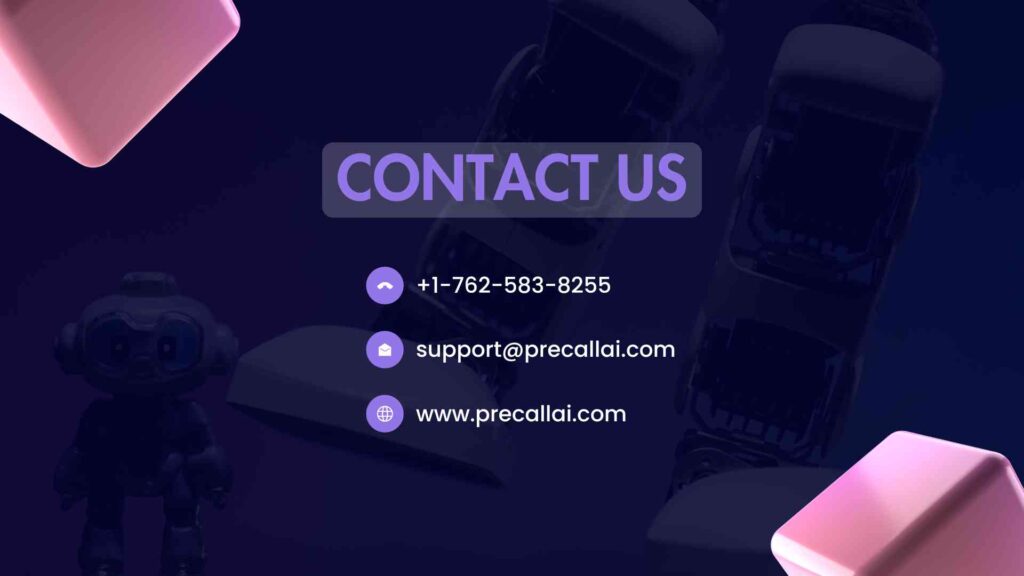
Personalized voice bots for sales deliver measurable revenue growth across industries. Conversion rates climb through optimal timing and tailored messaging. Cost efficiency improves dramatically versus traditional approaches. Customer satisfaction rises despite automated interactions.
The technology has matured dramatically in recent years. Natural language processing handles complex conversations effectively. Speech quality sounds remarkably human and engaging. Integration capabilities enable seamless system connectivity.
Successful implementations follow proven implementation patterns. Clear use case selection focuses efforts on highest-value opportunities. Thoughtful conversation design creates positive customer experiences. Robust integration connects bots to existing sales systems.


